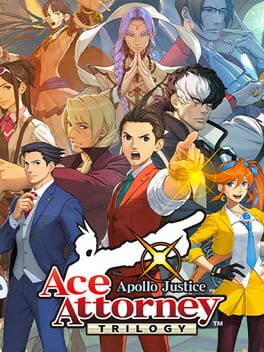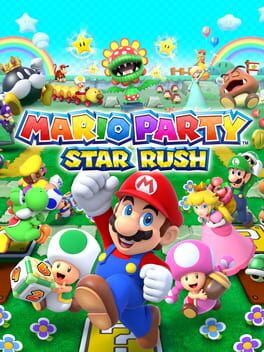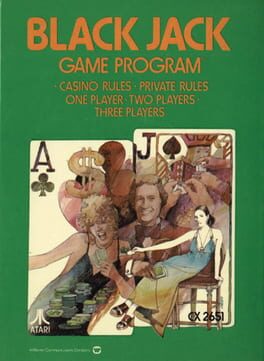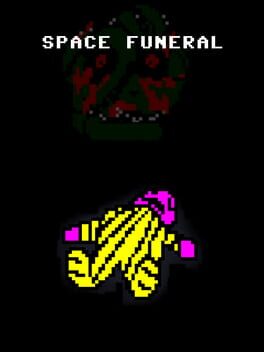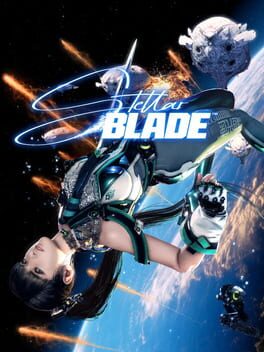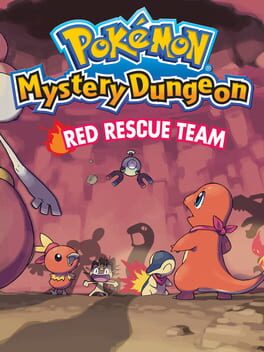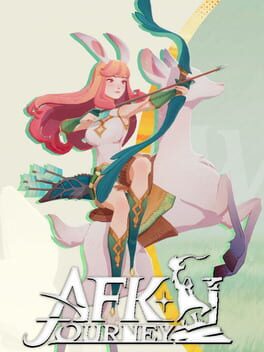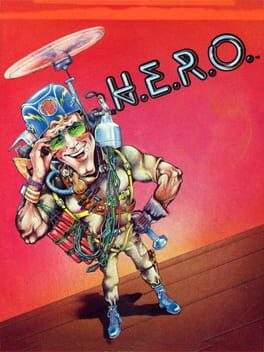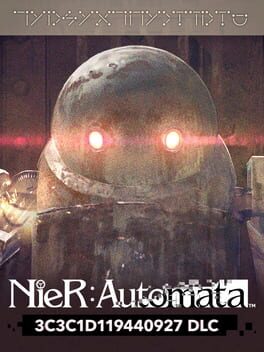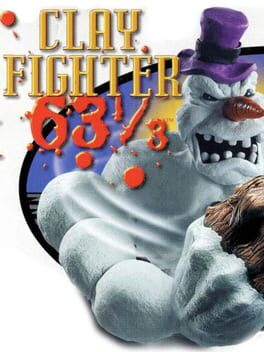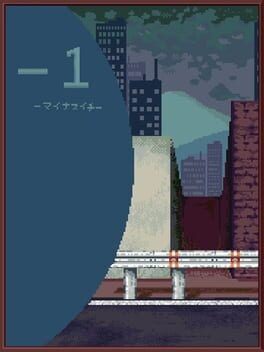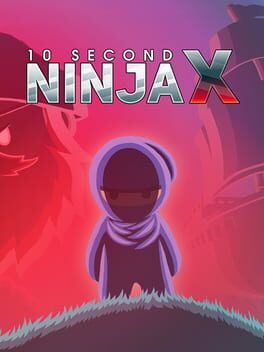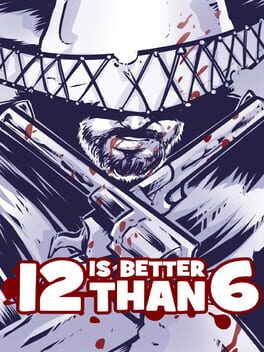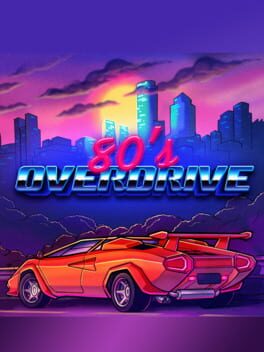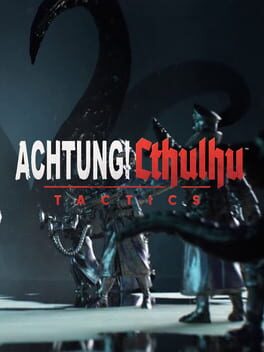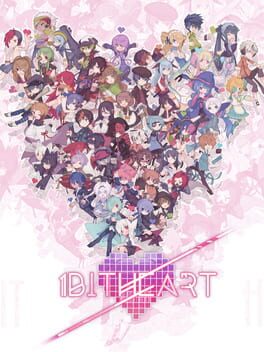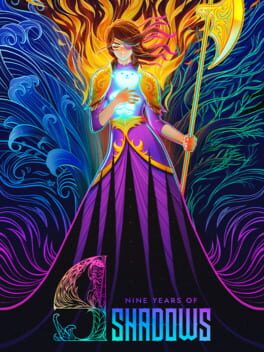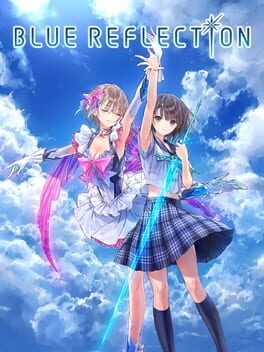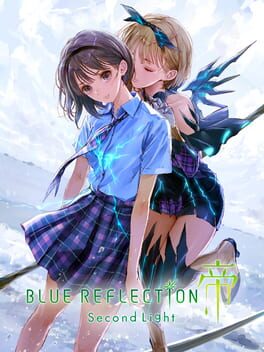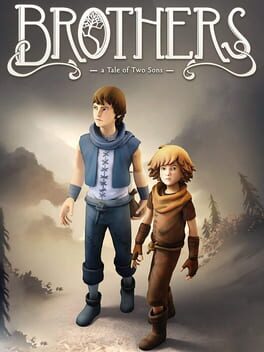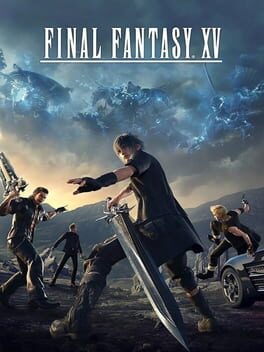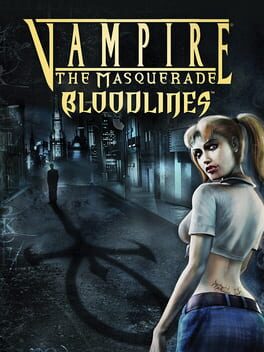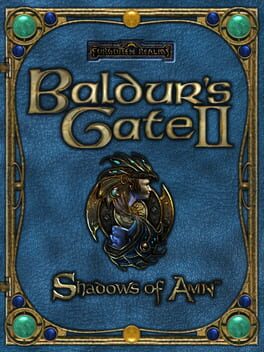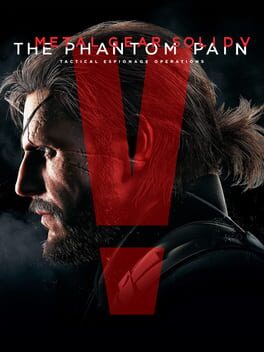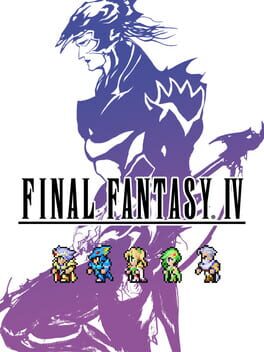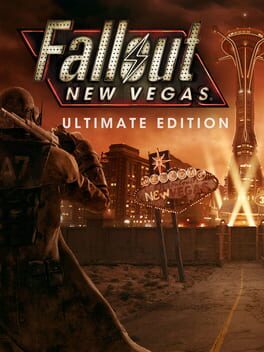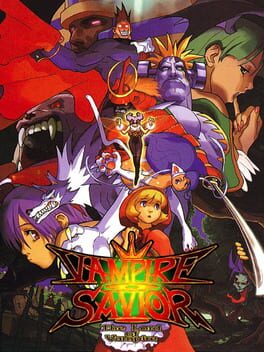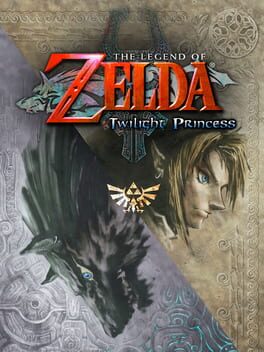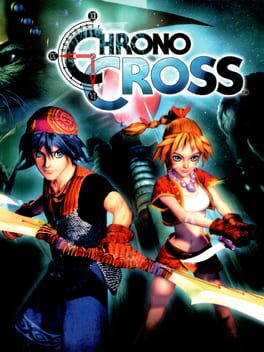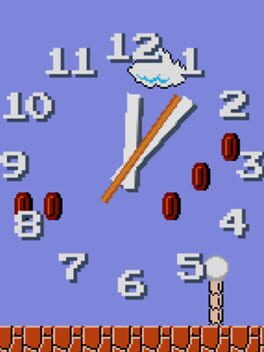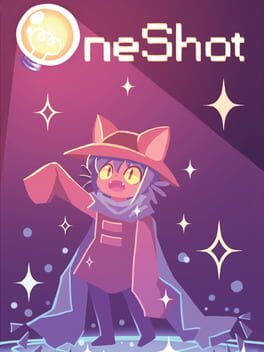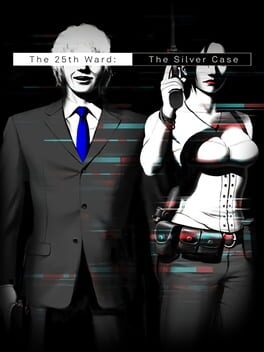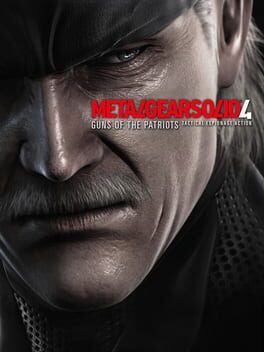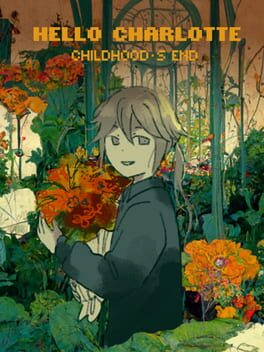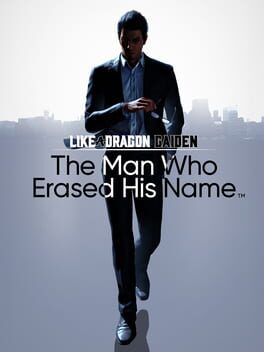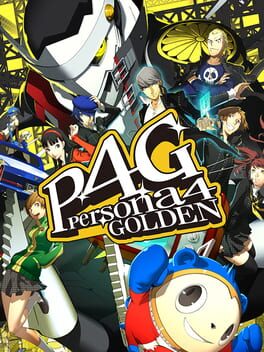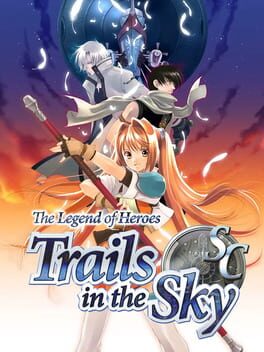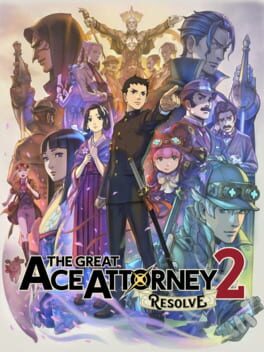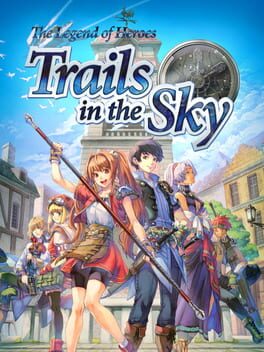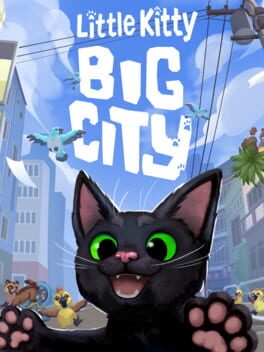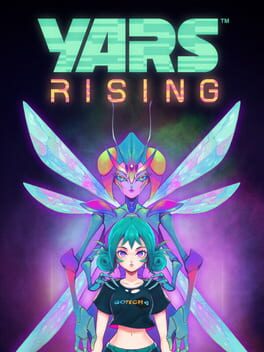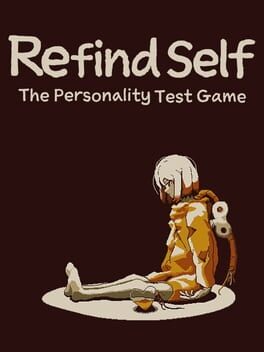SeriesGuy_811
1432 reviews liked by SeriesGuy_811
Fear & Hunger
2018
some of the best games ive played fully utilise the interactive medium to immerse the player into it's world, characters, and get across meaning, with fear and hunger being probably one of, if not the best example ive ever seen in a game doing this and absolutely perfecting this, the ludonarrative harmony created by the completely unfair dominating world filled with a dark and oppressive atmosphere, with every mistake you do booting you to the title screen with scarce saving, always keeping you on edge and a constant stream of anxiety for the next possible failure lying in wait, making it clear to the player that this is not a world built for them, and yet, the player has the ability and want to keep pushing further and harder, gaining more and more knowledge every attempt until finally reaching the (actual) end goal. this approach aids the developer into creating a commentary on human nature, that despite the fragility of the human body (through the mental torment endured by the player and possible lost limbs along the way) the human spirit is capable of persevering, with the player by the end of the game having felt and experienced this fact of life, a rather bright conclusion found from the desolate world of fear and hunger.
Blackjack
1977
Can I really be that harsh on a mfin atari 2600 launch title that seeks to replicate a simple gambling card game and nothing else? It's exactly what it says on the box, you want blackjack, you get blackjack. Only in the late 70's will you be able to find a card game that you play with a mfin paddle controller. It's pretty cool that this game supports up to four players though, even if its everyone vs the house rather than everyone vs each other. For the launch lineup this is probably one of the more social games in the bunch. You start with 200 chips and the chip counter resets at 1000 so I initially set that as my goal, but after getting to around 750 and then watching the house completely own me with enough back-to-back losses that I was back at basically square one again did I realize that huh yeah maybe this is why I shouldn't get a gambling addiction. Truly a cautionary tale from the dawn of console gaming that nobody seemed to heed, this game ran so Balatro and gacha games could crawl.
"Don't say stuff like that, it's depressing"
- Sora Kingdom-Hearts (2013)
Two weeks after the day I began the game, I have finally finished Final Fantasy VII Rebirth, my most anticipated game of 2024. What I imagined would be my surefire GOTY runaway pick, with Final Fantasy VII Remake being a game I beat three times, ended up being something I couldn't even smile at in completion. The ramifications of a changing games industry on Square Enix have been plentiful, with a large creative downfall since Final Fantasy XII hit the late-stage PS2 in 2006, the series has had a handful of ups and a plethora of downs. For every Final Fantasy XVI or VII Remake, there were three FFXIII's and a Crisis Core in tow. Quantity beseeched lack of quality, and the legendary fervor the series had invoked for decades previous had largely escaped. With the aforementioned XVI and VII Remake, it seemed like Square had finally righted the ship, creating action-rpg experiences with their familiar franchise that were quality in both narrative and mechanical scope... so what happened with Rebirth? I will divulge below.
I'll start with the good, and to give credit to the Rebirth team there is quite a bit of positives about this title in its entirety. The most immediate and obvious boon to Rebirth and the legendary world of Final Fantasy VII is... the world itself. Shortly after the completion of chapter one the game opens up to a faux open world (in reality, this is open zone) that beckons Cloud and the rest of Avalanche's splinter cell to roam across it. Throughout the fourteen chapters of the game the world and environment are thrown at the player to ooh and ahh at, beautiful beyond words especially in contrast to the 1997 title. Historical moments from twenty seven years ago are brought into HD in a manner that not even I could imagine, with my mouth agape at so many of the backdrops and cities recreated within Rebirth. Familiar places (of which I shall not divulge in respect to spoilers) blew me away. For a game that was developed effectively in four years, it is almost impossible to believe how hard the team led by Naoki Hamaguchi must have worked to not only create, but faithfully bring back to life, a world that was rich back then into the modern gamescape. As I motioned throughout Cloud's journey and came across familiar sites, my brain superimposed the 1997 titles' pre-rendered backgrounds and polygonal Cloud in front of me. There's a significantly delicate line that had to be walked across to be faithful to what was originally imagined and entered into the annals of media history by Yoshinori Kitase while also putting together an engrossing and interactive world for the zeitgeist of pop culture, and yet they found success. Colors pop, the world is filled to the brim with flora, fauna and perfected asset-placement to make it feel lived in. Each biome/locale is visibly different from the rest, granting a linear benchmark for players to cite where the memorable moments of their journey lie and how far they've come... it's impressive and one of the better done worlds that I've experienced in recent memory.
Character writing remains another highlight that carried over from Remake, with some of the original titles' most heart-gripping and serious moments taking place in Rebirth. The nice thing about having a thirty plus hour experience and the events that took place after Cloud joined the squad in Midgar is that the party is very familiar with one another. Barrett takes a more mature role, often playing the voice of reason to Cloud's ever-growing disillusionment. Aerith and Tifa become best buds gushing over the blonde bombshell's buster sword skills, while also careful of his Sephiroth-borne fragility. Red becomes a trusted confidant, friend, and much more than the lab-rat you find him as in the tail-end of Remake. Couple these in with new crew additions like Yuffie, Vincent, Cid, and Cait and you've got a colorful crew (mostly) ready to save the day. They all play off each other well too, keeping the focus on the effectively apocalyptic nature of the world they're in but not allowing the fear and anxiety to overwhelm them, often quipping with one another on their route with jokes and aimed gags. The lightheartedness of the in between moments in Rebirth gave this game legs that are very hard to convey without voice acting and simply as text upon a screen. Aerith, Red, Cloud, and even asinine characters like Cait are legitimately funny throughout this title. My only real gripe about the character writing is that Yuffie, a completely optional character in the Original FFVII talks WAY too much about Materia and how EVERYTHING has to be excused for her involvement because it could result in a cool-hip new materia for Wutai. That got old real quick, but thankfully tapered off in the game's final few chapters. There were a few moments where the tear ducts wanted to rev up, all moments that originated in 1997 but didn't come to emotional fruition until 2024. Moments like these drive home how special this remake series is, not only to FFVII itself but also for the history of gaming at large. The ability the Rebirth team has to bring these special scenes to life is going to do a lot for people who have grown up knowing Cloud and the gang for as long as they've been around.
Per usual I won't speak on the greater narrative at hand, but I do strongly believe it does a great job in not just remaining faithful to the original vision developed by Kitase, but expounding on the landmark moments as well. As I touched on in the previous paragraph, the VA work and modified writing a great job on their own, but the longform dedicated cutscenery is the right hook to the emotional network of Rebirth. You can tell this game was expensive to develop for a lot of reasons, but for the sake of this point its most evident in the advanced effort put into the CGI. I was yet again pausing ad nauseum taking screencaps of characters faces, beautiful backdrops, summons, cool moves, and epic fights. Because everything looks so damn good, it makes the moments that were so narratively impressive in the first title even more so in Rebirth. Character deaths, story arcs (Red's and Barrett's in particular) are tear-jerk extravaganza's because of the visual sheen that everything has.
Other miscellaneous congratulations to this game are in order for having an actual enjoyable card game (the first since Triple Triad in FFVIII) in Queen's Blood, and for also having one of the best introductory chapters in any title that I’ve ever played. To echo the former, I didn't realize how cavernous the minigame content would get within Rebirth, but Queen's Blood kept going, and it felt better and generally more fun with the more cards I got. I found myself restarting matches less and thinking more creatively against advanced opponents, it was cool!
Unfortunately that is where the good within Final Fantasy VII Rebirth generally stops for me, in the Final Fantasy VII of it all. The moments they re-created and breathed new life into were f** awesome, but what the team added and engulfed the title into was largely fluff work that waned my enjoyment of Rebirth greatly.
There's a real power in having a concise game, in a linear narrative or a controlled game that beckons the player to complete it in a structured manner. Now if you've read my reviews thus far this may seem like it combats my affinity for player agency, but it really doesn't. The best games are once that allow players to meld their playstyle to a journey that doesn't waste their time or ask them to embark upon completion of side content that exists without point. My favorite Final Fantasy titles are FFX, FFXVI, and FFVII Remake... some of the more "linear" titles that the series has to offer (XIII was not good, I choose to forget about it.) These three games push the player through loss, intense conflict, entire character arcs, and changed worlds without forcing the player into sidequest hell. This is where Rebirth falters so greatly that I could hardly believe what I was dealing with, even so much to think I was being pranked early into chapter two of fourteen. I rolled my eyes so hard that they almost fell out of their socket when nobody's favorite AI Chadley mentioned the "TOWERS" that Cloud would have to find across each region to map out the other sidequest chains. You go to a tower, of which there were probably six to eight for each of the game's major regions, and these towers would shine light on the location of special fights, lore spots that decreased the power of the area's summon, protorelic locations that involve a major sidequest line with a secret boss, and scavenging hunt locations. All of these suck by the way, none of them were enjoyable.
The Ubisoft-ification of the industry at large plagues open world titles, forgoing the legitimate interest these massive lived out zones can have in favor of map markers that are nothing more than things to complete. You backtrack, climb, hide, slide, and glide all over Final Fantasy VII Rebirth just to tick a checkmark and get on with your marry way. Where XVI and VII Remake succeed is that the only side content that involved, are sidequests of which there aren't really that many. People had a qualm with the volume of XVI's side quests, but Rebirth's feels as if it were tripled, especially with the length that these have. It was fun to become engrossed with the populous of these new locales and fulfill their requests as you do in Remake, however the vast majority of these end with you fighting some big bad monster at the end to right all of their wrongs. This got old REAL quick, as you enter a new area ready to become engrossed in the legendary narrative and beautiful world just to be met with a litany of orange "GO HERE FOR TOWERS" and green "MONOTONOUS SIDEQUEST" notices with a full on checklist to work through as soon as you arrive. My major qualm here is that there's a legitimate power into letting players breath and become involved in the world that has been meticulously laid before them. When I get to [insert location] I want to be wowed by the overwhelming forest and beautiful greens and blues that bring it to life. I want to meet the characters that will guide Cloud along his journey and the troubles that are soon to follow before I'm beckoned to engage with recycled mechanical content that feels more like a chore than a game. I wouldn't've had as much of an issue with this if it was lower in volume or didn't persist for as long as it did... but for ten of the games first twelve chapters (2-11,) I was doing a thousand yard stare as I powered through tower after tower and fought fiend after fiend to quell whatever concern villager after villager had. I became tired, and that's something that let me down more than anything else with Final Fantasy VII Rebirth.
And while I'm complaining about the Ubisoft plague on Square Enix' household, can we talk about those Moogles? like... what is this? Why is this? Who is this? Remember that one story of the Composer for the Resident Evil Dualshock edition who gave us the butt trumpets because he convinced everyone at Capcom that he was deaf, but he actually wasn't and had absolutely no idea how to compose video game music? Do we have a certain situation with the design of the moogle here? Moogles by the way were another genuinely awful minigame mechanic within Rebirth, forcing you to round up five or so moogles into a round pen while they throw a cacophony of mysterious attacks at you. Cloud does this inside of a moogle chief's mushroom house while nightmare fueling music plays. The hero of a resoundingly serious narrative in which the fate of the world as we know it and the entire population within is on the line, is running in circles pushing these Lovecraftian creatures together so he can buy some... books? It sucks and it isn't even the worst of the side content that you as the player are asked to complete because it holds rewards that make you and your party stronger.
The other is the completion of the protorelic questline, rewarding you with the ability to transmute top of the line gear and a summon that is stronger than most of the ones you'll receive. None of these protorelic questlines are fun, and there's one again for each major region that Cloud finds himself in. Four times the player in these areas will be asked to engage with a certain minigame to get closer to retrieving a protorelic. In the first area this is Queen's Blood which is... doable. In the second it's Fort Condor, raise your hand if you had ANY fun playing Fort Condor in the 1997 title or in the Intermission content for Remake. See? I don't even need to know who you are, what you look like, or where you are to know that ZERO people in the world are raising their hand. With Fort Condussy in mind, another region asks Cloud to learn how to play Battle Bots to obtain this gear... for what reason? Couldn't tell you! Is it thematically relevant to the narrative or world at hand? No! Is it fun at all? No! Does it make you, the player, feel like you've used your time accordingly? Absolutely not! But hey, there's useful gear hidden behind this questline so you better do it! The worst offender doesn't materialize until the last chapter of the game in which you are asked to play "Cactuar Crush" with a goblin named Kid G. Do yourself a favor right now, if you don't care about a minor sidequest spoiler, and look at what Kid G from Rebirth looks like. You'll want to wish you never read that sentence. Cactuar Crush is a minigame in which you have to kill a certain amount of nobody's favorite Final Fantasy recurring Cacti in a restricted time span. The kicker is that these cactuar have varying resistances that force the player to switch up their strategy to combo and kill. In theory this sounds like an engaging minigame to take part in, perhaps getting creative with movesets and attack combos. In reality though you're using Yuffie and Aerith to frantically take out these repulsively loud enemies in an awfully short period of time, stressed to hit a score that is definitely too high for the amount of time given and the ease it is to be docked points when you're hit. Add the awfully repulsive volume and frequency in which these cactuar make noise and you'll wish it was never a part of the game. That's my take on sidequest and tertiary content of FFVII Rebirth. You could offer the rebuttal to the above of "just don't do it," but there's unfortunately a sizable amount of useful material, gear, and experience stowed away within.
Not far removed from the amount of fights that these minigames and secondary content throws you into is my qualm with the combat and weapon upgrading at large within Rebirth. Final Fantasy VII Remake largely got it right, with fights that could be repetitive but it was pretty well split between humanoid enemies within Shinra and fiends that were found within the world. Bossfights weren't recycled for the most part, and they weren't perfect, but they were doable and outside of the Rufus fight... pretty easy to get through on your first go. Rebirth flips that one on its head and says "how about we bring a lot of those boss fights back, make you fight the same people two, three, maybe four times, and make the combat harder just because." Too many times to count was I getting hit by room-wide AOE's that I had to pre-plan for, of which could wipe my party to zero. Too many times were Barrett and Aerith being targeted by moves that they legitimately could not dodge out of because their i-frames don't exist and their rolls take them three feet one way. You'll get hit by everything and it'll hurt. Now I beat Remake three times, zero of those on hard, but I never felt that the game was too difficult. I didn't per se with Rebirth either, but every boss fight took WAY too long. Enemies felt like sponges and the stagger/pressure conditions on most of these boss encounters were infuriating. Add that into a reused offering of the special foes you fight, the frequency of which you do so, and many of these fights having pause points where you can't do damage because the boss needs to get a voice line/cutscene/move in, and you have an exhausting endeavor. That's my major gripe with this title, it's exhausting in all the wrong ways. I don't have an inherent issue with long games, pointing at Red Dead Redemption 2 and Persona's 4 and 5 for example. What these games do is give you ample moments to rest between monotonous moments of grind or boss-fighting. Rebirth throws it at you for effectively the entire ninety some hour runtime. Fights are long, against bosses and world enemies alike, and you never really feel... strong, an issue which may sound doltish to complain about but damnit after spending the entire first game being a badass SOLDIER with a crew of badasses, I want to feel like a badass! There was never a point in which I felt like I was amply handling world or story enemies with ease, despite being appropriately leveled. Sometimes you do just want to gun down a room of Shinra soldiers and get on with it, you don't always need to hit Yeoman First Class-Kun with forty buster sword hits to fell him. Simply, I felt like you as a powerful character who is tasked with destroying one of gaming's most sinister villains never actually feel as strong as you should and it removes some of the buy-in I had to the narrative pacing of Rebirth.
Another element to this game that made the character power of this game feel off was the way character levelling is done. Gone is the "yeah that makes sense" of Remake in favor of an obfuscated sphere grid that puts emphasis on party synergy over physically endorsing the strength/power of each character. I get that the larger cast makes this make more sense as an approach to take, but man does it just... not feel good. Remake's Intermission episode that came out with the Intergrade release forecasted the inevitability of Rebirth putting an emphasis on team-based combat, so I knew this was coming, but I think Rebirth goes about it the wrong way. Instead of letting you choose between stronger individuality and a cohesive team approach to combat, you're effectively forced into the latter. Even then though, it's just giving your party members more capabilities to synergize with each other and execute maneuvers with more and more members of your team. Once more, I understand why they did this but I think it throws the heroic power that the narrative beckons for into the gutter in favour of a misaligned execution of party mechanics.
Add these issues in with other slight complaints like the Kingdom-Heartsification of how FAST enemies move around the arena, and also an entire chapter where you play as Cait Sith for too long (longer than one minute) and you have a title I wish I liked a lot more than I did. It pains me to say, with how much I anticipated Final Fantasy VII Rebirth that the Final Fantasy VII parts were largely the only things I enjoyed about this game. I had this marked on my calendar for months, avoiding any demo content, and trailers, any State of Play material, because I enjoyed Remake so much. Due to the effects of Ubisoft on the industry, there’s too much content, most of which I found to be lacking of any real sort of enjoyment. I thought Rebirth would continue to put an effortless cherry on top of the dessert that was the original Final Fantasy VII. Instead they created a new dish and man, I wouldn't order it again. It seems the public at large enjoy it and critical reception of Rebirth is high, but I don't know if I could recommend it to anyone.
- Sora Kingdom-Hearts (2013)
Two weeks after the day I began the game, I have finally finished Final Fantasy VII Rebirth, my most anticipated game of 2024. What I imagined would be my surefire GOTY runaway pick, with Final Fantasy VII Remake being a game I beat three times, ended up being something I couldn't even smile at in completion. The ramifications of a changing games industry on Square Enix have been plentiful, with a large creative downfall since Final Fantasy XII hit the late-stage PS2 in 2006, the series has had a handful of ups and a plethora of downs. For every Final Fantasy XVI or VII Remake, there were three FFXIII's and a Crisis Core in tow. Quantity beseeched lack of quality, and the legendary fervor the series had invoked for decades previous had largely escaped. With the aforementioned XVI and VII Remake, it seemed like Square had finally righted the ship, creating action-rpg experiences with their familiar franchise that were quality in both narrative and mechanical scope... so what happened with Rebirth? I will divulge below.
I'll start with the good, and to give credit to the Rebirth team there is quite a bit of positives about this title in its entirety. The most immediate and obvious boon to Rebirth and the legendary world of Final Fantasy VII is... the world itself. Shortly after the completion of chapter one the game opens up to a faux open world (in reality, this is open zone) that beckons Cloud and the rest of Avalanche's splinter cell to roam across it. Throughout the fourteen chapters of the game the world and environment are thrown at the player to ooh and ahh at, beautiful beyond words especially in contrast to the 1997 title. Historical moments from twenty seven years ago are brought into HD in a manner that not even I could imagine, with my mouth agape at so many of the backdrops and cities recreated within Rebirth. Familiar places (of which I shall not divulge in respect to spoilers) blew me away. For a game that was developed effectively in four years, it is almost impossible to believe how hard the team led by Naoki Hamaguchi must have worked to not only create, but faithfully bring back to life, a world that was rich back then into the modern gamescape. As I motioned throughout Cloud's journey and came across familiar sites, my brain superimposed the 1997 titles' pre-rendered backgrounds and polygonal Cloud in front of me. There's a significantly delicate line that had to be walked across to be faithful to what was originally imagined and entered into the annals of media history by Yoshinori Kitase while also putting together an engrossing and interactive world for the zeitgeist of pop culture, and yet they found success. Colors pop, the world is filled to the brim with flora, fauna and perfected asset-placement to make it feel lived in. Each biome/locale is visibly different from the rest, granting a linear benchmark for players to cite where the memorable moments of their journey lie and how far they've come... it's impressive and one of the better done worlds that I've experienced in recent memory.
Character writing remains another highlight that carried over from Remake, with some of the original titles' most heart-gripping and serious moments taking place in Rebirth. The nice thing about having a thirty plus hour experience and the events that took place after Cloud joined the squad in Midgar is that the party is very familiar with one another. Barrett takes a more mature role, often playing the voice of reason to Cloud's ever-growing disillusionment. Aerith and Tifa become best buds gushing over the blonde bombshell's buster sword skills, while also careful of his Sephiroth-borne fragility. Red becomes a trusted confidant, friend, and much more than the lab-rat you find him as in the tail-end of Remake. Couple these in with new crew additions like Yuffie, Vincent, Cid, and Cait and you've got a colorful crew (mostly) ready to save the day. They all play off each other well too, keeping the focus on the effectively apocalyptic nature of the world they're in but not allowing the fear and anxiety to overwhelm them, often quipping with one another on their route with jokes and aimed gags. The lightheartedness of the in between moments in Rebirth gave this game legs that are very hard to convey without voice acting and simply as text upon a screen. Aerith, Red, Cloud, and even asinine characters like Cait are legitimately funny throughout this title. My only real gripe about the character writing is that Yuffie, a completely optional character in the Original FFVII talks WAY too much about Materia and how EVERYTHING has to be excused for her involvement because it could result in a cool-hip new materia for Wutai. That got old real quick, but thankfully tapered off in the game's final few chapters. There were a few moments where the tear ducts wanted to rev up, all moments that originated in 1997 but didn't come to emotional fruition until 2024. Moments like these drive home how special this remake series is, not only to FFVII itself but also for the history of gaming at large. The ability the Rebirth team has to bring these special scenes to life is going to do a lot for people who have grown up knowing Cloud and the gang for as long as they've been around.
Per usual I won't speak on the greater narrative at hand, but I do strongly believe it does a great job in not just remaining faithful to the original vision developed by Kitase, but expounding on the landmark moments as well. As I touched on in the previous paragraph, the VA work and modified writing a great job on their own, but the longform dedicated cutscenery is the right hook to the emotional network of Rebirth. You can tell this game was expensive to develop for a lot of reasons, but for the sake of this point its most evident in the advanced effort put into the CGI. I was yet again pausing ad nauseum taking screencaps of characters faces, beautiful backdrops, summons, cool moves, and epic fights. Because everything looks so damn good, it makes the moments that were so narratively impressive in the first title even more so in Rebirth. Character deaths, story arcs (Red's and Barrett's in particular) are tear-jerk extravaganza's because of the visual sheen that everything has.
Other miscellaneous congratulations to this game are in order for having an actual enjoyable card game (the first since Triple Triad in FFVIII) in Queen's Blood, and for also having one of the best introductory chapters in any title that I’ve ever played. To echo the former, I didn't realize how cavernous the minigame content would get within Rebirth, but Queen's Blood kept going, and it felt better and generally more fun with the more cards I got. I found myself restarting matches less and thinking more creatively against advanced opponents, it was cool!
Unfortunately that is where the good within Final Fantasy VII Rebirth generally stops for me, in the Final Fantasy VII of it all. The moments they re-created and breathed new life into were f** awesome, but what the team added and engulfed the title into was largely fluff work that waned my enjoyment of Rebirth greatly.
There's a real power in having a concise game, in a linear narrative or a controlled game that beckons the player to complete it in a structured manner. Now if you've read my reviews thus far this may seem like it combats my affinity for player agency, but it really doesn't. The best games are once that allow players to meld their playstyle to a journey that doesn't waste their time or ask them to embark upon completion of side content that exists without point. My favorite Final Fantasy titles are FFX, FFXVI, and FFVII Remake... some of the more "linear" titles that the series has to offer (XIII was not good, I choose to forget about it.) These three games push the player through loss, intense conflict, entire character arcs, and changed worlds without forcing the player into sidequest hell. This is where Rebirth falters so greatly that I could hardly believe what I was dealing with, even so much to think I was being pranked early into chapter two of fourteen. I rolled my eyes so hard that they almost fell out of their socket when nobody's favorite AI Chadley mentioned the "TOWERS" that Cloud would have to find across each region to map out the other sidequest chains. You go to a tower, of which there were probably six to eight for each of the game's major regions, and these towers would shine light on the location of special fights, lore spots that decreased the power of the area's summon, protorelic locations that involve a major sidequest line with a secret boss, and scavenging hunt locations. All of these suck by the way, none of them were enjoyable.
The Ubisoft-ification of the industry at large plagues open world titles, forgoing the legitimate interest these massive lived out zones can have in favor of map markers that are nothing more than things to complete. You backtrack, climb, hide, slide, and glide all over Final Fantasy VII Rebirth just to tick a checkmark and get on with your marry way. Where XVI and VII Remake succeed is that the only side content that involved, are sidequests of which there aren't really that many. People had a qualm with the volume of XVI's side quests, but Rebirth's feels as if it were tripled, especially with the length that these have. It was fun to become engrossed with the populous of these new locales and fulfill their requests as you do in Remake, however the vast majority of these end with you fighting some big bad monster at the end to right all of their wrongs. This got old REAL quick, as you enter a new area ready to become engrossed in the legendary narrative and beautiful world just to be met with a litany of orange "GO HERE FOR TOWERS" and green "MONOTONOUS SIDEQUEST" notices with a full on checklist to work through as soon as you arrive. My major qualm here is that there's a legitimate power into letting players breath and become involved in the world that has been meticulously laid before them. When I get to [insert location] I want to be wowed by the overwhelming forest and beautiful greens and blues that bring it to life. I want to meet the characters that will guide Cloud along his journey and the troubles that are soon to follow before I'm beckoned to engage with recycled mechanical content that feels more like a chore than a game. I wouldn't've had as much of an issue with this if it was lower in volume or didn't persist for as long as it did... but for ten of the games first twelve chapters (2-11,) I was doing a thousand yard stare as I powered through tower after tower and fought fiend after fiend to quell whatever concern villager after villager had. I became tired, and that's something that let me down more than anything else with Final Fantasy VII Rebirth.
And while I'm complaining about the Ubisoft plague on Square Enix' household, can we talk about those Moogles? like... what is this? Why is this? Who is this? Remember that one story of the Composer for the Resident Evil Dualshock edition who gave us the butt trumpets because he convinced everyone at Capcom that he was deaf, but he actually wasn't and had absolutely no idea how to compose video game music? Do we have a certain situation with the design of the moogle here? Moogles by the way were another genuinely awful minigame mechanic within Rebirth, forcing you to round up five or so moogles into a round pen while they throw a cacophony of mysterious attacks at you. Cloud does this inside of a moogle chief's mushroom house while nightmare fueling music plays. The hero of a resoundingly serious narrative in which the fate of the world as we know it and the entire population within is on the line, is running in circles pushing these Lovecraftian creatures together so he can buy some... books? It sucks and it isn't even the worst of the side content that you as the player are asked to complete because it holds rewards that make you and your party stronger.
The other is the completion of the protorelic questline, rewarding you with the ability to transmute top of the line gear and a summon that is stronger than most of the ones you'll receive. None of these protorelic questlines are fun, and there's one again for each major region that Cloud finds himself in. Four times the player in these areas will be asked to engage with a certain minigame to get closer to retrieving a protorelic. In the first area this is Queen's Blood which is... doable. In the second it's Fort Condor, raise your hand if you had ANY fun playing Fort Condor in the 1997 title or in the Intermission content for Remake. See? I don't even need to know who you are, what you look like, or where you are to know that ZERO people in the world are raising their hand. With Fort Condussy in mind, another region asks Cloud to learn how to play Battle Bots to obtain this gear... for what reason? Couldn't tell you! Is it thematically relevant to the narrative or world at hand? No! Is it fun at all? No! Does it make you, the player, feel like you've used your time accordingly? Absolutely not! But hey, there's useful gear hidden behind this questline so you better do it! The worst offender doesn't materialize until the last chapter of the game in which you are asked to play "Cactuar Crush" with a goblin named Kid G. Do yourself a favor right now, if you don't care about a minor sidequest spoiler, and look at what Kid G from Rebirth looks like. You'll want to wish you never read that sentence. Cactuar Crush is a minigame in which you have to kill a certain amount of nobody's favorite Final Fantasy recurring Cacti in a restricted time span. The kicker is that these cactuar have varying resistances that force the player to switch up their strategy to combo and kill. In theory this sounds like an engaging minigame to take part in, perhaps getting creative with movesets and attack combos. In reality though you're using Yuffie and Aerith to frantically take out these repulsively loud enemies in an awfully short period of time, stressed to hit a score that is definitely too high for the amount of time given and the ease it is to be docked points when you're hit. Add the awfully repulsive volume and frequency in which these cactuar make noise and you'll wish it was never a part of the game. That's my take on sidequest and tertiary content of FFVII Rebirth. You could offer the rebuttal to the above of "just don't do it," but there's unfortunately a sizable amount of useful material, gear, and experience stowed away within.
Not far removed from the amount of fights that these minigames and secondary content throws you into is my qualm with the combat and weapon upgrading at large within Rebirth. Final Fantasy VII Remake largely got it right, with fights that could be repetitive but it was pretty well split between humanoid enemies within Shinra and fiends that were found within the world. Bossfights weren't recycled for the most part, and they weren't perfect, but they were doable and outside of the Rufus fight... pretty easy to get through on your first go. Rebirth flips that one on its head and says "how about we bring a lot of those boss fights back, make you fight the same people two, three, maybe four times, and make the combat harder just because." Too many times to count was I getting hit by room-wide AOE's that I had to pre-plan for, of which could wipe my party to zero. Too many times were Barrett and Aerith being targeted by moves that they legitimately could not dodge out of because their i-frames don't exist and their rolls take them three feet one way. You'll get hit by everything and it'll hurt. Now I beat Remake three times, zero of those on hard, but I never felt that the game was too difficult. I didn't per se with Rebirth either, but every boss fight took WAY too long. Enemies felt like sponges and the stagger/pressure conditions on most of these boss encounters were infuriating. Add that into a reused offering of the special foes you fight, the frequency of which you do so, and many of these fights having pause points where you can't do damage because the boss needs to get a voice line/cutscene/move in, and you have an exhausting endeavor. That's my major gripe with this title, it's exhausting in all the wrong ways. I don't have an inherent issue with long games, pointing at Red Dead Redemption 2 and Persona's 4 and 5 for example. What these games do is give you ample moments to rest between monotonous moments of grind or boss-fighting. Rebirth throws it at you for effectively the entire ninety some hour runtime. Fights are long, against bosses and world enemies alike, and you never really feel... strong, an issue which may sound doltish to complain about but damnit after spending the entire first game being a badass SOLDIER with a crew of badasses, I want to feel like a badass! There was never a point in which I felt like I was amply handling world or story enemies with ease, despite being appropriately leveled. Sometimes you do just want to gun down a room of Shinra soldiers and get on with it, you don't always need to hit Yeoman First Class-Kun with forty buster sword hits to fell him. Simply, I felt like you as a powerful character who is tasked with destroying one of gaming's most sinister villains never actually feel as strong as you should and it removes some of the buy-in I had to the narrative pacing of Rebirth.
Another element to this game that made the character power of this game feel off was the way character levelling is done. Gone is the "yeah that makes sense" of Remake in favor of an obfuscated sphere grid that puts emphasis on party synergy over physically endorsing the strength/power of each character. I get that the larger cast makes this make more sense as an approach to take, but man does it just... not feel good. Remake's Intermission episode that came out with the Intergrade release forecasted the inevitability of Rebirth putting an emphasis on team-based combat, so I knew this was coming, but I think Rebirth goes about it the wrong way. Instead of letting you choose between stronger individuality and a cohesive team approach to combat, you're effectively forced into the latter. Even then though, it's just giving your party members more capabilities to synergize with each other and execute maneuvers with more and more members of your team. Once more, I understand why they did this but I think it throws the heroic power that the narrative beckons for into the gutter in favour of a misaligned execution of party mechanics.
Add these issues in with other slight complaints like the Kingdom-Heartsification of how FAST enemies move around the arena, and also an entire chapter where you play as Cait Sith for too long (longer than one minute) and you have a title I wish I liked a lot more than I did. It pains me to say, with how much I anticipated Final Fantasy VII Rebirth that the Final Fantasy VII parts were largely the only things I enjoyed about this game. I had this marked on my calendar for months, avoiding any demo content, and trailers, any State of Play material, because I enjoyed Remake so much. Due to the effects of Ubisoft on the industry, there’s too much content, most of which I found to be lacking of any real sort of enjoyment. I thought Rebirth would continue to put an effortless cherry on top of the dessert that was the original Final Fantasy VII. Instead they created a new dish and man, I wouldn't order it again. It seems the public at large enjoy it and critical reception of Rebirth is high, but I don't know if I could recommend it to anyone.
Space Funeral
2010
Stellar Blade
2024
Unstellar Blade
A game so milquetoast that it literally crashed my PC in switching inputs from my PS5 to my main display so I could write this review, and thus I lost all of my notes I had carefully constructed over the past three days of playtime. What I pulled together is that this was an attempt at making Nier: Automata without actually making it fun and without Yoko Taro.
I remember Stellar Blade's Official Reveal as Project Eve, named after the game's main character, jumping out of an otherwise uneventful and boring Sony State of Play with its flashy combat, beautiful environments, and overwhelmingly attractive protagonist. Hot character bait aside, I was interested in this game because of the influences it was clearly wearing on its sleeve in the aforementioned Platinum Games magnum opus. Many have tried and few have succeeded in nailing hack and slash as well as Platinum or their cousins in Capcom have done with the plethora of impressive titles between the two. Did I think Stellar Blade was going to go one on one with Nier, DMCV, or Metal Gear Rising? Absolutely not, but I did think it was worth a try, to see if there was a company out there who could go to bat with the best of them and put an effort forward that would be worth paying attention to in the years to come. I was excited for Stellar Blade as the release date neared, because it meant that I could one quell the discourse over the design of Eve by providing actual input on how the game plays, and secondly because the need for a fast paced hack and slash was weighing heavily on me after playing slower burn titles like FF7R2 and P3R fairly recently. Within a day of playing my interest waned but I remained hopeful, however on the third complete day of playing and the day I ultimately completed the game... I came away fairly perturbed.
The good, lets start with that why don't we? This game is downright beautiful. I played it on my PS5 on my 4K display with HDR enabled and woah nelly, it looked great. One of the greatest aspects of this title was how great both characters and the world looked from a graphical standpoint. As you transition from dilapidated buildings and streets into destroyed railways and misgiving deserts, your eyes will feast at the eye candy abound in the backgrounds of the world. I found myself navigating the camera up and down constantly at the world I was interacting with as it was tremendously rich in flavour and care from a design standpoint. I felt like the developers put a great deal of effort into creating a visually striking game, which unfortunately seems to have accompanied a trade off in other aspects of the title. More to come on that shortly, as I do want to praise the team for putting some of the best facial and body design in gaming forward. As I've already experienced, much of the conversation about Stellar Blade has been lost in the perceived attractiveness of Eve, but every character you interact with truly looks incredible. Though their proportions and mannerisms may not be totally... human, they are indubitably crafted with an intricacy and care to look astonishing. Stellar Blade if nothing else is a journey of eye candy, but that's kind of... it.
While not exactly fast enough to be a Nier-like, and notfun punishing and explore heavy enough to be a Souls-like, Stellar Blade attempted to forge a path forward that played out like a middle ground between Sekiro: Shadows Die Twice and the Jedi: Fallen Order/Survivor games. Eve's combat relies on using a plethora of learned abilities and tech to parry and dodge her way through a litany of grotesque alien foes who have claimed Earth to be their own. Where this goes wrong is in quite a few places, but the most apparent and earliest was in the poor "janky" feel and lack of reliability in both parry and dodge timings. This can be sort-of remedied by investing in Eve's skill trees and upgrading Eve's exo-spine but never really feels... good. Even if I was a dissenter of Sekiro over all, I felt like it mostly gave the right kind of feedback and snap to the parry/dodge timings required to master such a difficult title. For a game as infuriatingly hard as Stellar Blade gets in its late game, I felt like I was at the whimsy of luck in my dodges not directly feeding into a followup attack by a boss and my perfect parries not being read by the game because of poor latency or buffer timing. Time after time I'd land a perfect dodge only to be hit by the boss moving faster than Eve could recover right after. Cheap is the way I'd put that and it proliferated throughout the entire runtime of the title.
Difficulty is something I've spoken about ad nauseum in action-rpg titles and I'll continue to do so as I have an affinity for these kinds of games. After grinding my teeth in the (generally) slower paced Fromsoft classics and the speedy Platinum/Capcom games of the last decade and change, I feel like I'm fairly qualified. Stellar Blade early on feels hard, but not in a way that cannot be conquered. If I was getting my tail kicked by a group of world enemies or a boss, I found that I could readjust my stratagems to craft a better gameplan, coming back smarter and using my abilities at optimized times to come out victorious. I found my confidence growing, something that did not happen this early in Sekiro, and I continued on to the later stages of the game. I opened up my Playstation menu to check my progress, a feature of the console that tracks how far you've made it through the main story, and saw I had notched at 89%. I labored on to the area boss on one of the last major quests of the game. It was here I through my face into a wall, stressing with every ability and item I had to make it through the three phases and effective six health bars that the boss had. I double this up because of the way shields work. See in Stellar Blade, simply doing damage and having fun taking down your enemy's health bar is simply not allowed, you must first deplete their shields before you can do any "meaningful" damage to their hitpoints. Meaningful in quotations because even then on a fully upgraded weapon, after laboriously taking away the superfluous shield bar, you are granted the ability to do slightly more damage to the bosses health per hit. I've played Dark Souls underleveled and with un-upgraded weapons enough to know torment when it comes to weapons doing very little damage to bosses... and even that does not compare to how insulting Stellar Blade's damage counter feels.
It wasn't even until a few bosses later that I truly came to terms with my disdain for the needlessly draconian difficulty that exists within Stellar Blade's late game boss fights. I threw everything together that I could into defeating the (name kept out of review due to spoiler) boss. I thought I could craft a winning effort of combining my ultimate abilities with my tertiary skills and burst maneuvers, but nothing was taking. I couldn't perfect dodge and parry any longer against the multi-faceted and multi-phase boss fight at hand. Visual clarity was completely nuked from orbit as I could barely tell what moves were hitting me, where certain objects were, or where my Eve's reactions would take me next. A greater qualm I have with games at large now, I wrote about these most notably in my FFXVI DLC reviews, is a complete lack of being able to actually see what's going on in boss fights because of the "ooh how cool" quality that moves need to have. Keeping this in mind, the bosses began to teleport away CONSTANTLY from Eve so as to reposition their efforts while tarnishing any offensive effort I had put forth. This was rhythm breaking and tore any motivation I had towards chasing the enemy down, I felt discouraged and unmotivated to capitalize on optimized windows because I knew the boss would simply teleport away at any given moment. After being unable to keep up with this, the visuals going on, and the randomly included DPS checks, I put the game on "story mode" (reminder this is in the last hour or so of a medium length title) and kept chugging. I'm not actually sure this did anything to make the game easier. What it does in theory is give you windows to dodge and parry, popping up with on screen prompts of what button to press to not be hit by the enemies maneuvers. Does this work? Absolutely not. Most of the time these move to fast to even parse what move you're supposed to use, and half the bosses moves don't even populate your screen with a prompt at all. Through the next couple bosses and into the final boss I became increasingly confused if this was actually a difficulty slider at all or simply an effort to make you "feel" better by putting a semblance of choice of difficulty in front of you.
A best in class soundtrack (potentially one of the best of the year) and impressive visuals couldn't prop Stellar Blade up enough to go against its resoundingly poor English VA (I eventually played in Korean,) drab narrative heavily borrowed from Nier: Automata, and impressively frustrating and unrewarding combat. This is absolutely not a title worthy of purchasing at a $70 price tag, maybe half of that at best. I commend Sony and SHIFT UP for putting together a brand new IP and throwing some serious marketing at making this game stick out, but it felt like a great value Sekiro meets Nier at best. I would not recommend Stellar Blade to anyone with a PS5.
A game so milquetoast that it literally crashed my PC in switching inputs from my PS5 to my main display so I could write this review, and thus I lost all of my notes I had carefully constructed over the past three days of playtime. What I pulled together is that this was an attempt at making Nier: Automata without actually making it fun and without Yoko Taro.
I remember Stellar Blade's Official Reveal as Project Eve, named after the game's main character, jumping out of an otherwise uneventful and boring Sony State of Play with its flashy combat, beautiful environments, and overwhelmingly attractive protagonist. Hot character bait aside, I was interested in this game because of the influences it was clearly wearing on its sleeve in the aforementioned Platinum Games magnum opus. Many have tried and few have succeeded in nailing hack and slash as well as Platinum or their cousins in Capcom have done with the plethora of impressive titles between the two. Did I think Stellar Blade was going to go one on one with Nier, DMCV, or Metal Gear Rising? Absolutely not, but I did think it was worth a try, to see if there was a company out there who could go to bat with the best of them and put an effort forward that would be worth paying attention to in the years to come. I was excited for Stellar Blade as the release date neared, because it meant that I could one quell the discourse over the design of Eve by providing actual input on how the game plays, and secondly because the need for a fast paced hack and slash was weighing heavily on me after playing slower burn titles like FF7R2 and P3R fairly recently. Within a day of playing my interest waned but I remained hopeful, however on the third complete day of playing and the day I ultimately completed the game... I came away fairly perturbed.
The good, lets start with that why don't we? This game is downright beautiful. I played it on my PS5 on my 4K display with HDR enabled and woah nelly, it looked great. One of the greatest aspects of this title was how great both characters and the world looked from a graphical standpoint. As you transition from dilapidated buildings and streets into destroyed railways and misgiving deserts, your eyes will feast at the eye candy abound in the backgrounds of the world. I found myself navigating the camera up and down constantly at the world I was interacting with as it was tremendously rich in flavour and care from a design standpoint. I felt like the developers put a great deal of effort into creating a visually striking game, which unfortunately seems to have accompanied a trade off in other aspects of the title. More to come on that shortly, as I do want to praise the team for putting some of the best facial and body design in gaming forward. As I've already experienced, much of the conversation about Stellar Blade has been lost in the perceived attractiveness of Eve, but every character you interact with truly looks incredible. Though their proportions and mannerisms may not be totally... human, they are indubitably crafted with an intricacy and care to look astonishing. Stellar Blade if nothing else is a journey of eye candy, but that's kind of... it.
While not exactly fast enough to be a Nier-like, and not
Difficulty is something I've spoken about ad nauseum in action-rpg titles and I'll continue to do so as I have an affinity for these kinds of games. After grinding my teeth in the (generally) slower paced Fromsoft classics and the speedy Platinum/Capcom games of the last decade and change, I feel like I'm fairly qualified. Stellar Blade early on feels hard, but not in a way that cannot be conquered. If I was getting my tail kicked by a group of world enemies or a boss, I found that I could readjust my stratagems to craft a better gameplan, coming back smarter and using my abilities at optimized times to come out victorious. I found my confidence growing, something that did not happen this early in Sekiro, and I continued on to the later stages of the game. I opened up my Playstation menu to check my progress, a feature of the console that tracks how far you've made it through the main story, and saw I had notched at 89%. I labored on to the area boss on one of the last major quests of the game. It was here I through my face into a wall, stressing with every ability and item I had to make it through the three phases and effective six health bars that the boss had. I double this up because of the way shields work. See in Stellar Blade, simply doing damage and having fun taking down your enemy's health bar is simply not allowed, you must first deplete their shields before you can do any "meaningful" damage to their hitpoints. Meaningful in quotations because even then on a fully upgraded weapon, after laboriously taking away the superfluous shield bar, you are granted the ability to do slightly more damage to the bosses health per hit. I've played Dark Souls underleveled and with un-upgraded weapons enough to know torment when it comes to weapons doing very little damage to bosses... and even that does not compare to how insulting Stellar Blade's damage counter feels.
It wasn't even until a few bosses later that I truly came to terms with my disdain for the needlessly draconian difficulty that exists within Stellar Blade's late game boss fights. I threw everything together that I could into defeating the (name kept out of review due to spoiler) boss. I thought I could craft a winning effort of combining my ultimate abilities with my tertiary skills and burst maneuvers, but nothing was taking. I couldn't perfect dodge and parry any longer against the multi-faceted and multi-phase boss fight at hand. Visual clarity was completely nuked from orbit as I could barely tell what moves were hitting me, where certain objects were, or where my Eve's reactions would take me next. A greater qualm I have with games at large now, I wrote about these most notably in my FFXVI DLC reviews, is a complete lack of being able to actually see what's going on in boss fights because of the "ooh how cool" quality that moves need to have. Keeping this in mind, the bosses began to teleport away CONSTANTLY from Eve so as to reposition their efforts while tarnishing any offensive effort I had put forth. This was rhythm breaking and tore any motivation I had towards chasing the enemy down, I felt discouraged and unmotivated to capitalize on optimized windows because I knew the boss would simply teleport away at any given moment. After being unable to keep up with this, the visuals going on, and the randomly included DPS checks, I put the game on "story mode" (reminder this is in the last hour or so of a medium length title) and kept chugging. I'm not actually sure this did anything to make the game easier. What it does in theory is give you windows to dodge and parry, popping up with on screen prompts of what button to press to not be hit by the enemies maneuvers. Does this work? Absolutely not. Most of the time these move to fast to even parse what move you're supposed to use, and half the bosses moves don't even populate your screen with a prompt at all. Through the next couple bosses and into the final boss I became increasingly confused if this was actually a difficulty slider at all or simply an effort to make you "feel" better by putting a semblance of choice of difficulty in front of you.
A best in class soundtrack (potentially one of the best of the year) and impressive visuals couldn't prop Stellar Blade up enough to go against its resoundingly poor English VA (I eventually played in Korean,) drab narrative heavily borrowed from Nier: Automata, and impressively frustrating and unrewarding combat. This is absolutely not a title worthy of purchasing at a $70 price tag, maybe half of that at best. I commend Sony and SHIFT UP for putting together a brand new IP and throwing some serious marketing at making this game stick out, but it felt like a great value Sekiro meets Nier at best. I would not recommend Stellar Blade to anyone with a PS5.
Ever since last Eid, I've been trying to complete this game. Slowly chipping away at this game, but now It's finally complete. The premise has always stuck out to me. Though, this game starts to show its flaws the further you go. It's a game designed for bus rides to school, for the long car rides to grandma house, not for the long binge sessions I'm usually accustomed to.
After fighting the grueling fight against Articuno, the cracks started to show. With the party you randomly amassed, dungeoneering starts to feel like a clusterfuck. Especially with the map covering the screen. Though, it might just not be for me
After fighting the grueling fight against Articuno, the cracks started to show. With the party you randomly amassed, dungeoneering starts to feel like a clusterfuck. Especially with the map covering the screen. Though, it might just not be for me
AFK Journey
2024
H.E.R.O.
1984
Mechanically for a game on the 2600 this kicks ass, you could have released this on NES with a mild graphical/control facelift and it would have fit in. It's an action platformer with 20 levels to go through of increasing length and complexity. You have an inspector-gadget-ass helicopter helmet that you can use to fly around levels, a laser cannon to destroy enemies, and bombs that you can place to break walls, and there's a power meter that serves as a level timer. My only gripes come from the controls and the level design; I had to pretty much immediately switch to a mega drive controller instead of a 2600 joystick because its really easy to misinput down on the stick and drop a bomb that kills you instantly (i need to buy some new atari controllers ngl...). The way you hover and fly is really weird too in that you have to hold up for like a whole half second before you start flying, and tapping up holds you in place for like a half second if you are falling. Considering the fact that roderick hero over here has a rather swift movement and falling speed, the delay between flying and falling can and will absolutely fuck you up at points. I wish they went for a more like lunar-lander style of physics and momentum system with flight instead of the 3 phases of flying, hovering, and falling that you can slugglishly toggle between. The level designer is also an asshole starting from like level 7 onwards, with levels that know exactly the limitations of your moveset and will capitalize on your weaknesses in a very dirty way. You can't shoot things below you, so there are lots of holes with enemies under them that work as dead ends in a sort. There are also enemies placed precisely where you'd go if you need to charge up your flying ability, and so many holes where your high fall speed will launch you into a block of lava before you can even register what is going on. It's difficult, but in the way of just needing to memorize the whole level layouts to mitigate any of the designers nonsense. The point threshold to become part of the Order of the H.E.R.O. is honestly pretty low at only 75k, which on a decent run you'd get that much by level 13. Honestly pretty crazy to see a game of such solid quality right in the dark year of 1984 between the big Atari Shock and the release of the NES. Makes ya wonder what other games could have existed to expand upon early 80's hardware if everyone didn't panic pull out from the market then.
82 lists liked by SeriesGuy_811
by TimAlien |
9 Games
by duhnuhnuh |
355 Games
by CorpsSansOrganes |
52 Games
by CorpsSansOrganes |
108 Games
by theia |
10 Games
by theia |
1 Games
by CorpsSansOrganes |
43 Games
by Wollom |
29 Games
by Nintendo |
18 Games
